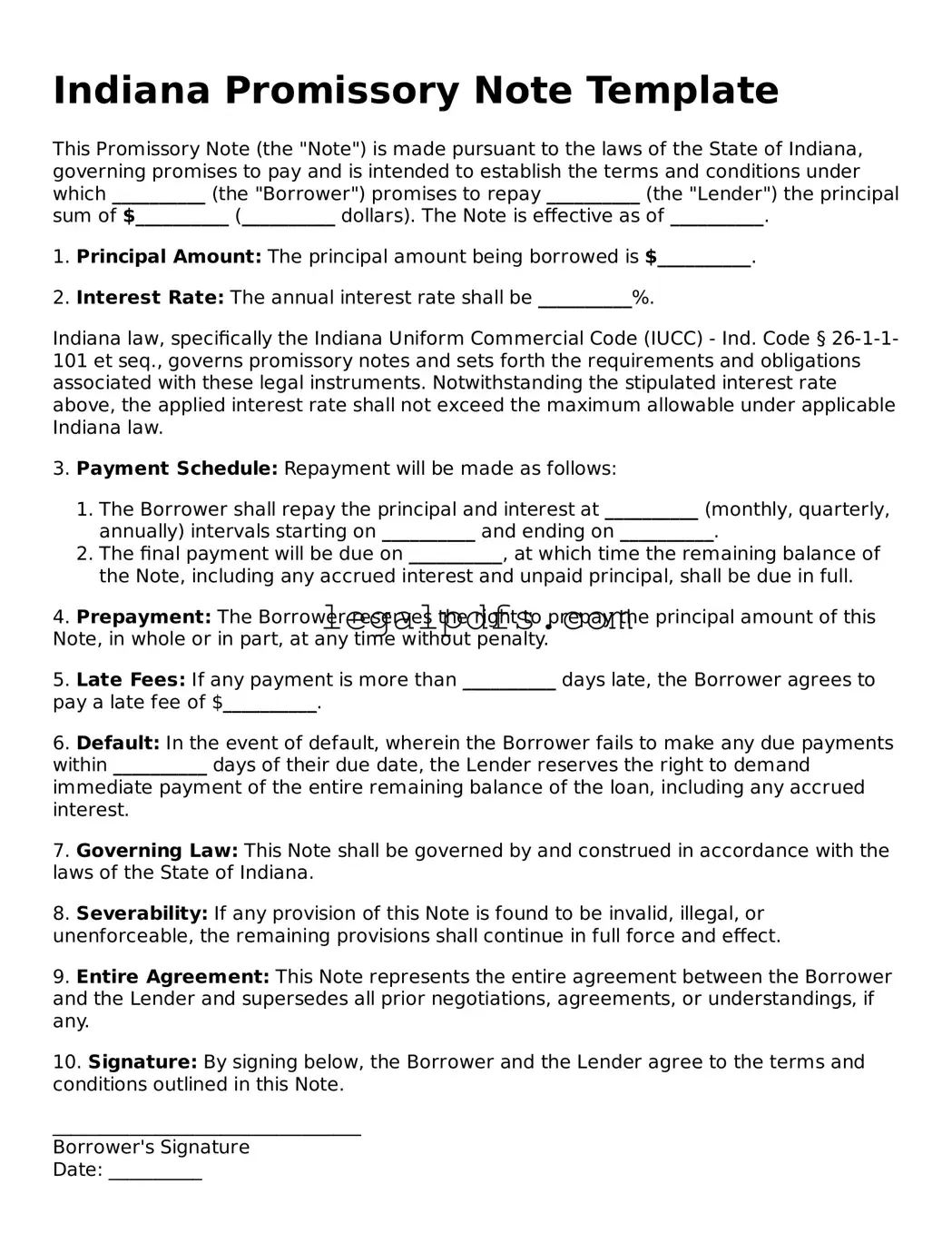Indiana Promissory Note Template
This Promissory Note (the "Note") is made pursuant to the laws of the State of Indiana, governing promises to pay and is intended to establish the terms and conditions under which __________ (the "Borrower") promises to repay __________ (the "Lender") the principal sum of $__________ (__________ dollars). The Note is effective as of __________.
1. Principal Amount: The principal amount being borrowed is $__________.
2. Interest Rate: The annual interest rate shall be __________%.
Indiana law, specifically the Indiana Uniform Commercial Code (IUCC) - Ind. Code § 26-1-1-101 et seq., governs promissory notes and sets forth the requirements and obligations associated with these legal instruments. Notwithstanding the stipulated interest rate above, the applied interest rate shall not exceed the maximum allowable under applicable Indiana law.
3. Payment Schedule: Repayment will be made as follows:
- The Borrower shall repay the principal and interest at __________ (monthly, quarterly, annually) intervals starting on __________ and ending on __________.
- The final payment will be due on __________, at which time the remaining balance of the Note, including any accrued interest and unpaid principal, shall be due in full.
4. Prepayment: The Borrower reserves the right to prepay the principal amount of this Note, in whole or in part, at any time without penalty.
5. Late Fees: If any payment is more than __________ days late, the Borrower agrees to pay a late fee of $__________.
6. Default: In the event of default, wherein the Borrower fails to make any due payments within __________ days of their due date, the Lender reserves the right to demand immediate payment of the entire remaining balance of the loan, including any accrued interest.
7. Governing Law: This Note shall be governed by and construed in accordance with the laws of the State of Indiana.
8. Severability: If any provision of this Note is found to be invalid, illegal, or unenforceable, the remaining provisions shall continue in full force and effect.
9. Entire Agreement: This Note represents the entire agreement between the Borrower and the Lender and supersedes all prior negotiations, agreements, or understandings, if any.
10. Signature: By signing below, the Borrower and the Lender agree to the terms and conditions outlined in this Note.
_________________________________
Borrower's Signature
Date: __________
_________________________________
Lender's Signature
Date: __________
